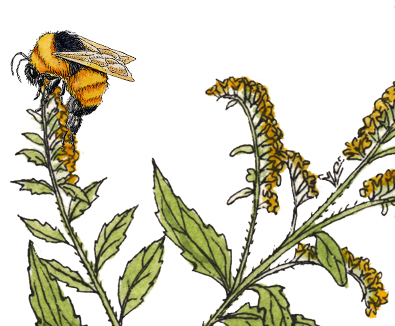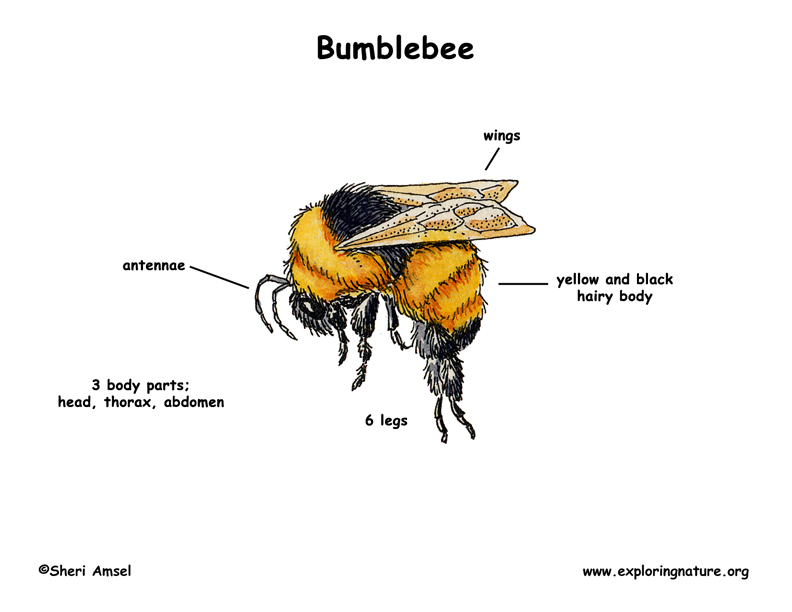

Of the 250 kinds (species) of bumblebee in the world, 200 of them are found in North America.
They live in fields, pastures, orchards, yards, and nests underground.
They are black and yellow and hairy. They have orange pollen collectors on their legs. They are 1/2 - 1" long.
They fly around collecting pollen and pollinating plants as they go. They do sting but are not aggressive like some bees. They will avoid humans rather than sting. They are social insects and live in colonies. Each spring the queen that has survived the winter will find nesting a site to start her new colony.
The queen's first eggs become workers that collect pollen and nectar for food.
During the spring, the queen lays her eggs in an underground nest site to start that summer's colony. The colony can grow to have 500 bees by the end of the summer.
Kingdom: Animalia
Phylum: Arthropoda
Class: Insecta
Order: Hymenoptera
Family: Apidae
Genus: Bombus
When you research information you must cite the reference. Citing for websites is different from citing from books, magazines and periodicals. The style of citing shown here is from the MLA Style Citations (Modern Language Association).
When citing a WEBSITE the general format is as follows.
Author Last Name, First Name(s). "Title: Subtitle of Part of Web Page, if appropriate." Title: Subtitle: Section of Page if appropriate. Sponsoring/Publishing Agency, If Given. Additional significant descriptive information. Date of Electronic Publication or other Date, such as Last Updated. Day Month Year of access < URL >.
Amsel, Sheri. "Bumblebee" Exploring Nature Educational Resource ©2005-2024. December 14, 2024
< http://www.exploringnature.org/db/view/Bumblebee >

